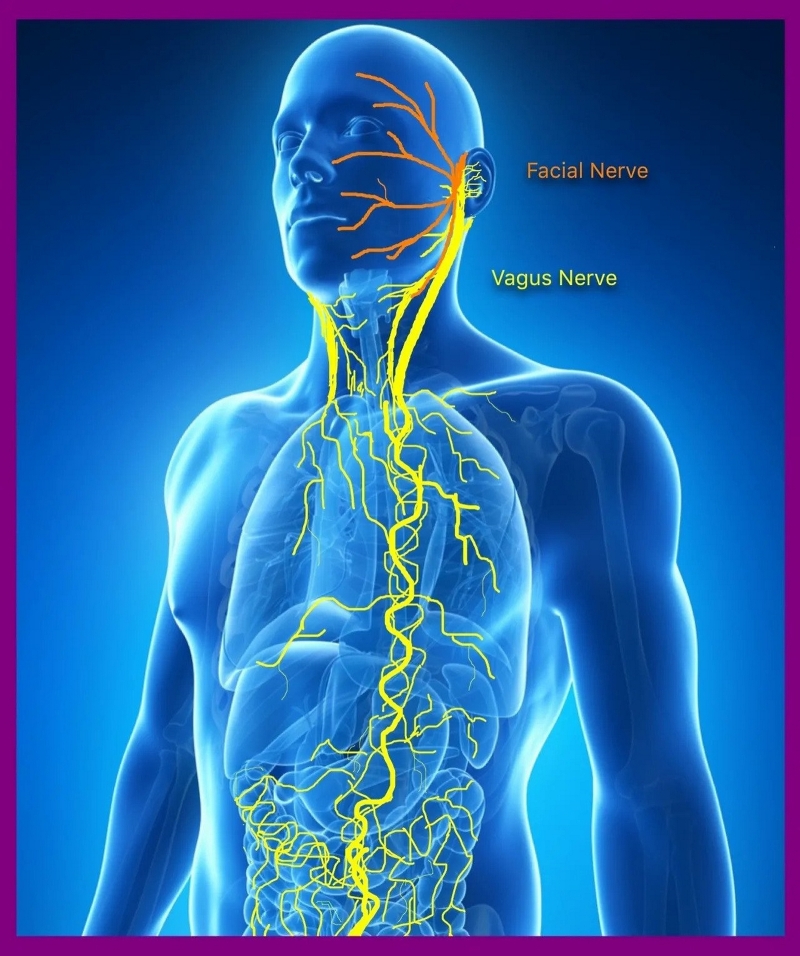The primary nerves of the parasympathetic nervous system are the vagus nerve, also referred to as the vagal nerves. This system regulates a variety of bodily processes, including digestion, heart rate, and the immune system. You cannot consciously regulate these functions, hence they are involuntary.
75% of the nerve fibers in your parasympathetic nervous system are found in your left and right vagal nerves. These fibers communicate with your heart, digestive system, and brain. Of the 12 cranial nerves, the vagus nerves are the tenth. The vagus is often referred to as cranial nerve X, which is the Roman numeral for 10.
A damaged vagus nerve can cause gastroparesis, which is the inability of food to enter your intestines. Some vasovagal syncope sufferers experience dizziness due to low blood pressure.
Anatomy of the Vagus Nerve
The Location of the Vagus Nerve
Your vagus nerves, which connect your brain to your big intestine, are the longest cranial nerves. Your left vagus nerve runs the length of your left side. Your body’s right side is covered by the right vagus nerve. Your vagal nerves go through your body in a long, meandering path. They emerge from your lower brainstem’s medulla oblongata. The nerves then travel through or make contact with your:
- Chest (thorax).
- Abdomen and digestive tract
- Lungs.
- Heart.
- Neck (between your carotid artery and jugular vein).

What are the Vagal Nerve Branches?
The vagal trunk is made up of the intersection of your left and right vagal nerves. Your esophageal hiatus, or the point where your esophagus enters your abdominal cavity, is where they connect . The anterior and posterior gastric nerves, which branch off into your abdomen, are part of the vagal trunk.
Vagal nerve branches are:
- Superior ganglion branch that serves nerves to your spine and ear.
- Inferior ganglion branch that serves nerves and muscles to your throat (pharynx) and voice box (larynx).
- Vagus nerve branch that serves nerves to your heart, lungs and esophagus (tube connecting your mouth and stomach).
Functions of the Vagus Nerve
They have critical functions in involuntary sensory and motor (movement) processes, such as:
- Digestion.
- Respiration, blood pressure, and heart rate (breathing).
- Immunological reactions.
- Mood.
- Production of saliva and mucus.
- Muscle and skin sensations.
- Speech.
- Taste.
- Discharge of urine.
Disoders and other Conditions
These conditions may affect your vagus nerve:
- Gastroparesis: When a vagus nerve is injured, food cannot pass from your stomach into your intestines. Diabetes, viral infections, abdominal surgery, and scleroderma are just a few conditions that might harm the vagal nerve.
- Vasovagal syncope: Another word for fainting is syncope. Vasovagal syncope is a condition where your heart’s vagus nerve overreacts to conditions like intense heat, anxiety, hunger, pain, or stress. Orthostatic hypotension is a rapid drop in blood pressure that can leave you feeling lightheaded or faint.
What Symptoms indicate Vagus Nerve Problems?
Depending on the specific reason and the damaged portion of your nerve, vagus nerve disorders result in a variety of symptoms. You might encounter:
- Bloating and soreness in the abdomen.
- Reflux of acid (gastroesophageal reflux disease, GERD).
- Changes in blood pressure, blood sugar, or heart rate.
- Swallowing issues or a loss of the gag reflex.
- Fainting or dizziness
- Voice loss, wheezing, or hoarseness
- Appetite loss, feeling full quickly, or sudden weight loss.
- Vomiting and nauseous.
Summary
Your body’s automatic processes, including heart rate, respiration, and digestion, are managed in large part by your vagal nerves. Gastroparesis, among other digestive issues, can be brought on by damage to your vagal nerves. Your brain receives electrical signals from healthcare professionals using Vagus Nerve Stimulations (VNS). These impulses reduce erratic brain electrical activity.
